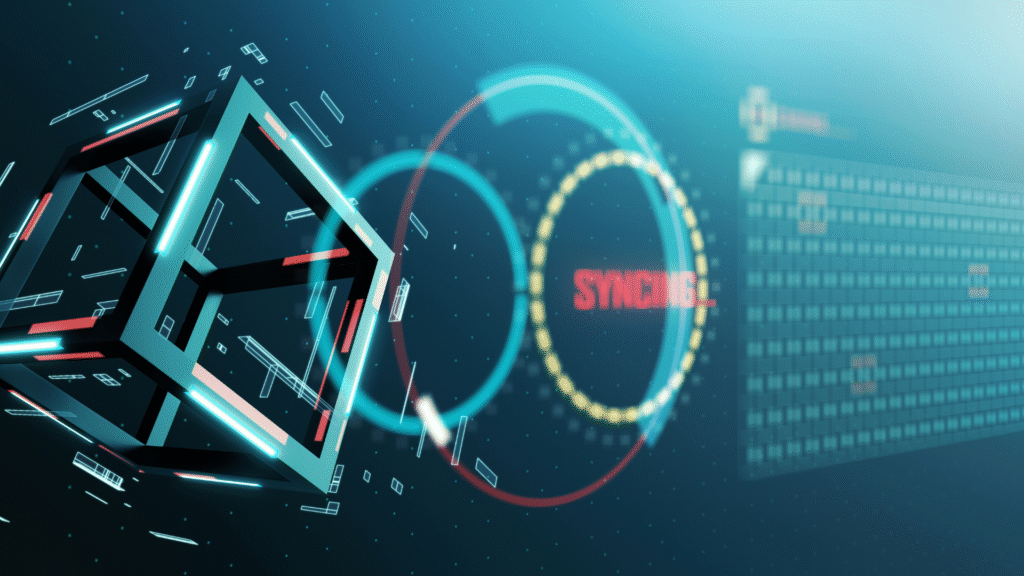In today’s digital healthcare ecosystem, data security and patient privacy are top priorities. As medical data continues to grow exponentially, managing and sharing sensitive health information securely has become a critical challenge. This is where Blockchain in Healthcare emerges as a transformative solution. It offers a decentralized, transparent, and secure way to store and share patient information while maintaining privacy and trust among stakeholders. Through blockchain technology, healthcare providers can revolutionize how medical records are exchanged, ensuring integrity, confidentiality, and accessibility.
Understanding Blockchain in Healthcare
Blockchain in Healthcare refers to the application of blockchain technology—a distributed ledger system that records transactions securely and immutably—within the medical field. In simple terms, it allows healthcare institutions, laboratories, insurance companies, and patients to store and exchange information in a tamper-proof, transparent, and efficient manner. Every piece of data, once entered into the blockchain, is verified, timestamped, and stored across a network of computers, making it nearly impossible to alter without consensus.
This unique structure ensures that patient data remains secure and traceable. Unlike traditional centralized systems, blockchain eliminates the risk of single-point failures and unauthorized access. It fosters trust among healthcare entities by guaranteeing that data authenticity and privacy are preserved at all times.
Why Blockchain Matters
The healthcare industry faces multiple data-related challenges—data breaches, mismanagement of records, inefficient interoperability between systems, and lack of patient control over their medical data. Blockchain in Healthcare addresses these pain points effectively through three core benefits:
- Data Security: Blockchain’s cryptographic algorithms ensure that patient data cannot be modified or accessed without permission.
- Transparency: Every action performed on the blockchain is recorded, creating a clear and verifiable audit trail.
- Decentralization: By distributing data across multiple nodes, blockchain removes dependence on a central authority, reducing vulnerability to cyberattacks or system failures.
As healthcare systems become increasingly digital, blockchain provides the foundation for a safer, more transparent environment for all data transactions.
Secure Data Sharing with Blockchain
Secure data sharing remains one of the most complex issues in healthcare. Patient records are often fragmented across different institutions, leading to inefficiencies and diagnostic errors. Blockchain enables seamless and secure data sharing among authorized entities while maintaining patient confidentiality.
When a new medical record is created, it can be added as a new block to the blockchain. Only parties with the appropriate cryptographic keys can access or view the information. Patients can grant or revoke permissions at any time, ensuring full control over who accesses their medical data. This empowers individuals while improving the quality of care.
For instance, if a patient visits a new specialist, they can instantly grant access to their complete medical history through blockchain-based systems, reducing paperwork, duplication, and potential medical errors.
Protecting Patient Privacy through Blockchain
One of the greatest strengths of blockchain lies in its ability to protect patient privacy. Healthcare data often contains personally identifiable information (PII), which, if leaked, can lead to severe consequences such as identity theft or insurance fraud.
Blockchain technology uses advanced encryption and anonymization techniques to secure such information. Instead of storing raw data directly, blockchain stores encrypted hashes or pointers to data stored off-chain. This means even if someone gains unauthorized access to the blockchain, they cannot decipher patient identities or medical details.
Furthermore, blockchain gives patients greater autonomy. They can decide how their health data is used—whether for research, insurance claims, or clinical trials—through smart contracts that automate consent management.
Use Cases of Blockchain in Healthcare
- Electronic Health Records (EHRs): Blockchain creates unified and tamper-proof patient records that can be securely shared across hospitals and clinics, ensuring continuity of care.
- Drug Traceability: It helps track pharmaceutical products from manufacturing to distribution, combating counterfeit drugs and ensuring product authenticity.
- Clinical Trials: Blockchain ensures transparency and integrity in clinical research by recording every data entry, preventing manipulation or fraud.
- Insurance and Billing: Smart contracts streamline claim verification and automate settlements, reducing fraud and administrative costs.
- Public Health Data Management: Blockchain can securely collect and analyze anonymized health data for disease surveillance without compromising individual privacy.
These applications highlight how blockchain is not merely a technological upgrade but a structural shift toward transparency and efficiency in healthcare systems.
Challenges in Implementing Blockchain in Healthcare
Despite its immense potential, implementing this technology in the medical field comes with notable challenges. Scalability remains a key issue, as healthcare organizations generate vast amounts of data daily, and managing this efficiently on decentralized networks can be demanding. Compliance with strict data protection regulations such as HIPAA and GDPR adds another layer of complexity, requiring systems to meet both legal and ethical standards. Integrating blockchain with existing hospital infrastructure is also difficult due to varying data formats and legacy systems. Additionally, the high cost of adoption—including system development, training, and maintenance—can discourage smaller facilities from embracing the technology.
Addressing these challenges will require coordinated efforts among healthcare institutions, policymakers, and technology providers to create secure, interoperable, and sustainable solutions.
The Road Ahead for Healthcare Data Security
The future of digital healthcare looks promising as governments, hospitals, and technology companies increasingly invest in advanced, decentralized systems to strengthen data protection. These innovations are reshaping how sensitive medical information is exchanged, while improving patient engagement and collaboration among healthcare providers.
Emerging trends such as integrating artificial intelligence with decentralized networks can further boost predictive analytics and support personalized treatment plans. With broader adoption, this approach may soon set a new global benchmark for safeguarding medical records and enhancing privacy standards.
By promoting patient-centered care and transparency, this technology has the potential to rebuild trust within the healthcare ecosystem, empowering individuals with full control over their health information while maintaining the highest standards of confidentiality and security.
Frequently Asked Questions (FAQs)
1. What does this technology mean for the healthcare industry?
A. It refers to the use of decentralized digital systems to securely store, share, and manage medical data across hospitals, clinics, insurance providers, and patients. This approach promotes transparency, accuracy, and patient confidentiality.
2. How does it improve patient privacy?
A. Medical records are encrypted, and access is granted only to authorized users. Patients hold full control over who can view or use their data through secure digital keys, preventing unauthorized sharing or misuse.
3. What are the key advantages of adopting this system?
A.Major benefits include stronger data protection, better coordination between healthcare providers, reduced fraud, improved record management, and increased patient empowerment through control over personal health information.
4. Can it be integrated with existing medical systems?
A.Yes, integration is possible but requires alignment with current technical standards and healthcare regulations. It often involves connecting decentralized ledgers with existing electronic health record systems while ensuring privacy compliance.
5. What challenges does the healthcare sector face when implementing it?
A. Difficulties include scalability concerns, meeting strict regulatory requirements, ensuring system interoperability, and managing the high costs of setup, maintenance, and staff training.
6. What does the future hold for this innovation in healthcare?
A. The future looks bright, as decentralized technology is expected to set new global standards for medical data protection and transparency—leading to a more efficient, patient-focused healthcare ecosystem.



